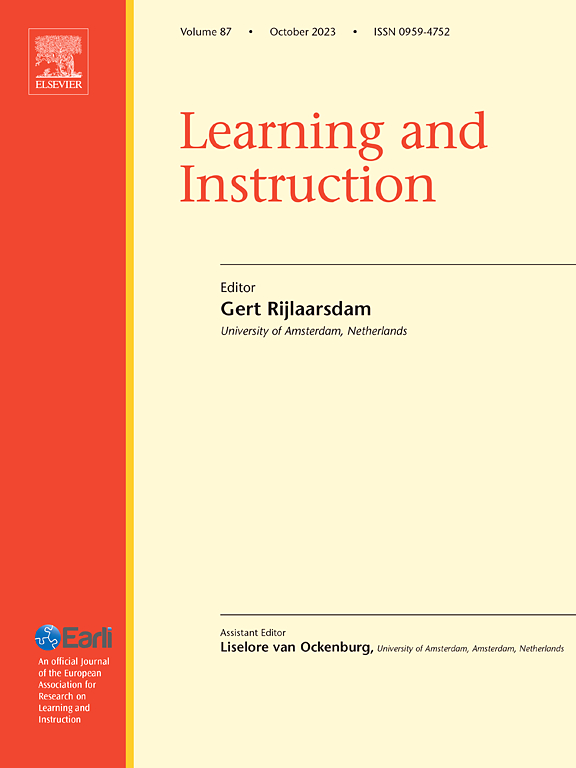Some do's and don'ts of Educational Videos
IF 4.9
1区 教育学
Q1 EDUCATION & EDUCATIONAL RESEARCH
引用次数: 0
Abstract
Background
This commentary synthesises findings from six articles forming a special issue on Educational Videos in Learning and Instruction. These studies, grounded in multimedia learning principles, aim to explore the impact of various video design elements and interventions on learning, cognitive load, and motivational outcomes.
Methods
The articles examined various video design features, including prompts, emotional design, talking heads, subtitles, and human presence. Empirical studies employing experimental and quasi-experimental designs were reviewed, with a focus on their methods, key findings, and theoretical implications.
Results
Positive learning outcomes were observed when videos incorporated deeper processing tasks, prompts, and emotional design elements. However, no significant learning gains were found with the inclusion of talking heads or subtitles. While human presence, such as guiding hands, was frequently used, no advantages from embodied cognition were detected. Self-reported cognitive load consistently aligned with learning outcomes as predicted by cognitive load theory. Despite many interventions enhancing social and motivational factors, these improvements did not translate into measurable learning gains, revealing an unexpected disconnect.
Conclusions
The commentary concludes with practical guidelines for designing educational videos and recommendations for future research. Effective design practices emphasise fostering cognitive engagement while addressing the limitations of emotional and social enhancements in promoting learning. These insights highlight critical considerations for optimising video-based learning and related research methodologies.
教育视频的一些注意事项
这篇评论综合了六篇文章的发现,形成了一个关于学习和教学中的教育视频的特刊。这些研究基于多媒体学习原则,旨在探讨各种视频设计元素和干预措施对学习、认知负荷和动机结果的影响。方法研究了各种视频设计特征,包括提示、情感设计、对话头、字幕和人的存在。本文回顾了采用实验和准实验设计的实证研究,重点介绍了它们的方法、主要发现和理论意义。结果当视频中包含更深层次的处理任务、提示和情感设计元素时,观察到积极的学习效果。然而,加入会说话的头或字幕后,学习效果并没有显著提高。虽然经常使用人类的存在,比如指路之手,但没有发现具身认知的优势。自我报告的认知负荷与认知负荷理论预测的学习结果一致。尽管许多干预措施增强了社会和动机因素,但这些改善并没有转化为可衡量的学习收益,揭示了意想不到的脱节。评论总结了设计教育视频的实用指南和对未来研究的建议。有效的设计实践强调促进认知参与,同时解决促进学习的情感和社会增强的局限性。这些见解强调了优化基于视频的学习和相关研究方法的关键因素。
本文章由计算机程序翻译,如有差异,请以英文原文为准。
求助全文
约1分钟内获得全文
求助全文
来源期刊

Learning and Instruction
Multiple-
CiteScore
11.30
自引率
4.80%
发文量
109
期刊介绍:
As an international, multi-disciplinary, peer-refereed journal, Learning and Instruction provides a platform for the publication of the most advanced scientific research in the areas of learning, development, instruction and teaching. The journal welcomes original empirical investigations. The papers may represent a variety of theoretical perspectives and different methodological approaches. They may refer to any age level, from infants to adults and to a diversity of learning and instructional settings, from laboratory experiments to field studies. The major criteria in the review and the selection process concern the significance of the contribution to the area of learning and instruction, and the rigor of the study.
 求助内容:
求助内容: 应助结果提醒方式:
应助结果提醒方式:


